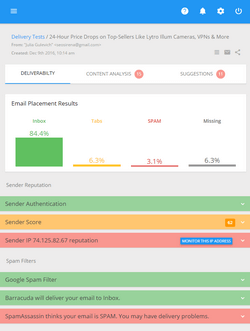Defining “Soft” and “Hard” Email Bounces
A good list management system will break down your bouncebacks into "hard" and "soft" bounces. The e-mail delivery protocol, SMTP, classifies failures to transient or permanent. Soft bounces are considered as transient failures and hard bounces – as permanent failures.
However, there’s no agreement on hard and soft bounce definitions. Some people suggest treating a returned message as a soft bounce if the failure reason is a full mailbox. But ISPs consider these failures to be permanent. For example, in the Yahoo’s delivery instructions it is stated that the "mailbox full" is a permanent error because of which the email address should be removed from a mailing list. There are also other definitions that differ in precision and clarity.
It’s not possible to draw a neat borderline between temporary and permanent delivery failures. Some failures may be permanent until a required action is taken, for example, until you contact the ISP to get you removed from the IP block. Temporary failures may turn into permanent if you take the wrong action. An AOL temporary block will expire unless you do something wrong, such as failing to reduce complaints or bounces.
Furthermore, failure codes aren’t always accurate or descriptive. A valid email address may bounce with a "user unknown" error because of a database failure. Some emails may return with the "system error" or "user unknown" errors for a blacklisting. In the result good email addresses may be rejected while bad addresses will remain on a list due to failure to determine soft bounces.
Despite of the confusion in soft and hard bounces definition, we rely on automatic classification that is not always perfect. For our metrics we need to know whether the email was successfully delivered or not and whether we should send emails at not delivered emails in the future, because leaving bad addresses on a list can be disastrous, resulting in spamtrap hits as ISPs repurpose addresses that have been undeliverable for a long time.
Table of contents | Page list for this chapter | Next page

